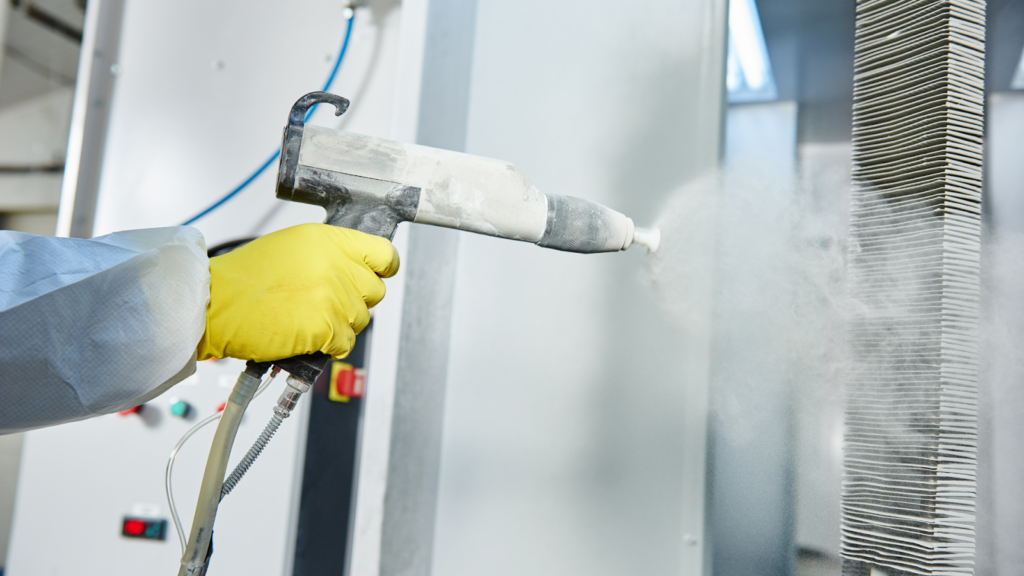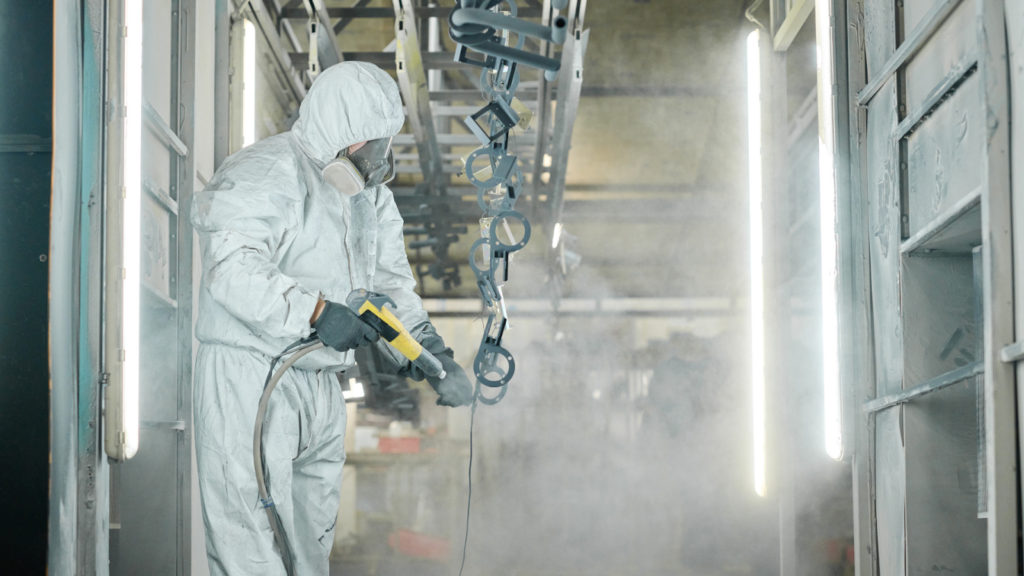MIL-PRF-16173 is a key specification by the U.S. Department of Defense for corrosion preventive compounds used in military settings, including solvent-dispersed inhibitors and water-displacing compounds. It’s essential for protecting military materials and equipment from corrosion in harsh environments, with different grades and classes specified for various levels of protection, from short-term storage to long-term exposure in severe conditions. Widely used in aviation, naval, and ground equipment, this specification ensures that critical defense assets remain intact and functional. It’s crucial for manufacturers, suppliers, and military maintenance teams, as using products that meet this specification helps prolong equipment life, reduce maintenance costs, and maintain military readiness and reliability.
The Importance of MIL-PRF-16173
MIL-PRF-16173 is vital for maintaining the defense infrastructure’s resilience and efficiency, crucially combating corrosion, which can significantly degrade military equipment over time. This specification offers guidelines for preventing rust and corrosion, especially important for assets in harsh environments like saltwater or extreme temperatures. Following MIL-PRF-16173 not only helps reduce maintenance and repair costs by extending equipment life and minimizing the need for repairs, but it also ensures that military gear is reliable and ready for use.
Additionally, it enhances the safety of military personnel by preventing equipment failure caused by corrosion, which is essential in high-stakes situations. Furthermore, adhering to MIL-PRF-16173 supports sustainability in the defense sector by prolonging equipment life and minimizing waste, aligning with the growing emphasis on sustainable practices. Overall, MIL-PRF-16173 is key to keeping military assets in top condition, ensuring operational readiness, and reducing costs and environmental impact.
Benefits of Using MIL-PRF-16173
The utilization of MIL-PRF-16173 corrosion preventive compounds offers a multitude of benefits, crucial for maintaining the operational integrity and longevity of military equipment. Here are some of the key advantages:
Enhanced Equipment Longevity
By providing a robust barrier against corrosion, MIL-PRF-16173 compounds significantly extend the service life of military assets. This protective layer shields equipment from the deleterious effects of moisture, salt, and other corrosive elements, ensuring that critical defense assets remain operational over longer periods.
Cost Efficiency
Implementing corrosion preventive measures as outlined in MIL-PRF-16173 can lead to substantial cost savings for military operations. By mitigating the onset of corrosion, the need for frequent repairs and replacements is greatly reduced, allowing for more efficient allocation of defense budgets towards strategic investments rather than maintenance.
Operational Reliability
The reliability of military equipment is paramount, especially in demanding operational environments. MIL-PRF-16173 compounds ensure that equipment maintains its structural integrity and functionality, minimizing the risk of failures that could compromise missions. This reliability is critical not only for the success of operations but also for the safety of personnel.
Versatility Across Environments
Given the wide range of conditions in which military operations take place, the versatility of MIL-PRF-16173 in offering protection across diverse environments is a significant benefit. Whether in humid jungles, arid deserts, or salty maritime settings, these compounds provide consistent and effective corrosion prevention, ensuring equipment readiness under any circumstance.
Ease of Application
The specification includes products designed for easy application, allowing for quick and effective treatment of surfaces without the need for specialized equipment or extensive downtime. This ease of use facilitates regular maintenance routines and ensures that corrosion protection does not disrupt the operational availability of assets.
Compliance and Standardization
Adhering to MIL-PRF-16173 standards helps in maintaining uniformity and compliance across all levels of military maintenance and procurement. This standardization is essential for ensuring that all equipment receives the same level of protection, streamlining logistics and maintenance processes.
Application Methods for MIL-PRF-16173
Applying MIL-PRF-16173 corrosion preventive compounds effectively requires understanding the various methods suited to different military assets and operational needs. Here’s an overview of the most common application techniques:
Brushing
Brushing is ideal for small areas or when precision is necessary. It allows for controlled application, ensuring that the compound reaches all nooks and crannies. This method is often used for touch-ups or maintenance of already treated equipment.
Spraying
Spraying is the preferred method for covering large surfaces quickly and evenly. It can be performed with conventional spray equipment, making it suitable for both field and maintenance facility applications. Spraying ensures a uniform coat over large areas, providing comprehensive protection.
Dipping
For smaller components or parts that require thorough coverage, dipping is an effective method. Parts are submerged in a bath of MIL-PRF-16173 compound, ensuring complete coverage. This method is particularly useful for complex geometries that might be challenging to cover evenly with brushing or spraying.
Rolling
Similar to brushing, rolling is used for controlled application on larger flat surfaces. It offers more coverage efficiency than brushing and is suitable for applying thicker layers of the compound.
Automated Application
In advanced maintenance facilities, automated systems can apply MIL-PRF-16173 compounds with high precision and consistency. These systems are ideal for high-volume or repetitive tasks, ensuring uniform application across multiple items.
Preparation and Aftercare
Regardless of the application method chosen, surface preparation is crucial. Surfaces must be clean, dry, and free of any contaminants to ensure optimal adhesion and effectiveness of the corrosion preventive compounds. After application, adequate drying or curing time, as specified by the product guidelines, is essential for the compound to establish a protective barrier fully.
Compliance with MIL-PRF-16173
Achieving compliance with MIL-PRF-16173 involves a multifaceted approach, ensuring that corrosion preventive compounds not only meet the specified standards but are also applied correctly to maintain the integrity and readiness of military equipment. Here’s a breakdown of key considerations for compliance:
Product Selection
The first step towards compliance is selecting the right corrosion preventive compound that meets MIL-PRF-16173 specifications. This includes choosing the appropriate grade and class based on the intended application, environmental conditions, and the specific protection needs of the equipment. Manufacturers of these compounds must provide detailed product data sheets and certifications confirming their compliance with the specification.
Quality Assurance
Regular testing and quality assurance measures are vital to ensure ongoing compliance. This includes both the initial certification testing by manufacturers and periodic quality checks by military maintenance teams. Such measures verify that the corrosion preventive compounds maintain their protective properties over time and under various operational conditions.
Proper Application
Compliance is not solely about the product itself but also how it is applied. As outlined in the previous section, following the recommended application methods and ensuring thorough surface preparation are crucial. Inadequate application can compromise the effectiveness of the corrosion preventive coating, leading to potential non-compliance and the risk of corrosion damage.
Documentation and Record-Keeping
Maintaining detailed records of the use and application of MIL-PRF-16173 compounds is essential for compliance. This documentation should include information on the products used, application dates, methods, and any observations or issues noted during application and use. Such records are crucial for audit purposes and for informing future maintenance schedules and practices.
Training and Awareness
Ensuring that personnel involved in the application and maintenance of corrosion preventive compounds are adequately trained is another critical aspect of compliance. Regular training sessions can help keep teams up-to-date on best practices, new products, and changes to the MIL-PRF-16173 specification.
Environmental Considerations
Compliance also extends to environmental regulations and safety standards. It’s important to select and use MIL-PRF-16173 products that align with environmental protection guidelines and safety regulations to ensure that their application does not pose hazards to personnel or the environment.
Frequently Asked Questions
What distinguishes MIL-PRF-16173 Grade 1 from Grade 2?
Grade 1 is designed for general-purpose corrosion prevention, offering a balance between protection and ease of removal. Grade 2 provides more durable, long-term protection suitable for harsh environments but may be more difficult to remove.
Can MIL-PRF-16173 compounds be used on electronic components?
Yes, certain formulations of MIL-PRF-16173 are safe for use on electronic components, providing corrosion protection without impairing functionality. It’s important to select the correct type and follow application guidelines closely.
How often should MIL-PRF-16173 compounds be reapplied?
The reapplication frequency depends on the operating environment, the type of compound used, and the asset’s exposure to corrosive elements. Regular inspections can help determine the need for reapplication.
Are there any storage considerations for MIL-PRF-16173 compounds?
These compounds should be stored in a cool, dry place away from direct sunlight and extreme temperatures. Proper storage ensures the compound’s effectiveness is maintained over time.
Is special equipment required for applying MIL-PRF-16173 compounds?
While special equipment is not always necessary, using spraying equipment or dipping facilities can enhance application efficiency and coverage, especially for large or complex assets.
Can MIL-PRF-16173 be applied over existing paint?
Yes, some grades of MIL-PRF-16173 are designed to be applied over painted surfaces without damaging the paint or reducing the compound’s effectiveness. Compatibility testing is recommended.
How is compliance with MIL-PRF-16173 verified?
Compliance is verified through third-party testing and certification, ensuring that the compound meets all performance and safety standards outlined in the specification.
Are MIL-PRF-16173 compounds environmentally friendly?
Many manufacturers are developing more environmentally friendly formulations that comply with MIL-PRF-16173, focusing on reducing VOCs and other harmful chemicals.
What happens if MIL-PRF-16173 is not properly applied?
Improper application can lead to inadequate protection against corrosion, potentially resulting in equipment damage. Following application guidelines is crucial for effective protection.
Can MIL-PRF-16173 compounds be removed, and how?
Yes, these compounds are designed to be removable when necessary. The method of removal—such as solvent cleaning, high-pressure washing, or manual cleaning—depends on the compound’s grade and the substrate.

